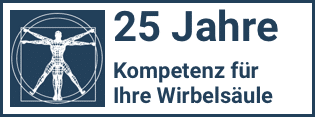Spinal Canal Stenosis – Symptoms and Therapy
The spinal cord is a collection of nerve fibers that travels down the center of the back through a canal created by the vertebrae. The spinal canal is the name given to the passageway.
Spinal canal stenosis is diagnosed when there is an abnormally narrow space within the spinal column. This issue can cause the spinal cord and the nerves that run through the spine to become compressed. The neck and the lower back are the most common locations for the development of spinal stenosis. Some people with spinal stenosis do not even experience any symptoms of the condition. Others might experience discomfort, tingling, loss of feeling, and muscle weakness. As many as thirteen percent of the population is afflicted with Spinal Canal Stenosis.
The most common reason for a narrowing spinal canal is the natural aging processes that occur over time. Those who suffer from severe cases of vertebral canal stenosis may be candidates for surgical treatment. On the other hand, surgical intervention is necessary for fewer than 10% of patients who present with a narrowing spinal canal.
What Causes Spinal Stenosis?
There are two distinct variations of the spinal stenosis condition. The area of the spine where the narrowing is located determines the type of condition the patient has. A condition known as cervical stenosis occurs when the space in the neck region of the spine becomes restricted. Lumbar stenosis is a condition in which the space in the lower back region of the spine becomes narrowed. Spinal stenosis can manifest itself in either of two different ways. The most typical form is lumbar spinal stenosis.
Osteoarthritis
The most frequent cause of vertebral canal stenosis is osteoarthritis, a degenerative joint disease caused by the gradual wearing down of the joints over time. Because osteoarthritis starts to bring about changes in most people’s spines by the time they reach the age of 50, spinal stenosis is very common. Because of this, most people who suffer from the condition of spinal stenosis are over the age of 50. Moreover, spinal stenosis is more likely to manifest in females than males.
As the spinal canal becomes more constrictive, the passageways between the vertebrae will become less expansive. The constriction may pinch the spinal cord or even the nerve endings around it, resulting in distress, tingling, or nerve damage in the affected individual’s legs, upper limbs, or torso.
Several conditions or circumstances can cause spinal stenosis in addition to osteoarthritis, including the following:
Bulging or Herniated Disks
A flat, round anti-shock pad, known as a vertebral disk, sits between each vertebra. These disks perform the function of shock absorbers. The gelatinous center of these disks can become exposed due to the aging, drying out, and compressing of the vertebral disks and breaking in the outer edge of the disks. This process causes the outer layer of the disks to become brittle or torn. When this happens, the disk presses on the nerves that are nearby.
Thickened Ligaments
The connective tissue bands known as ligaments are responsible for keeping the spine in place. Arthritis can make ligaments thicken over time, which can cause them to protrude into the spinal canal space, thus causing spinal canal stenosis.
Vertebral Fractures or Injuries
Broken or dislocated bones and inflammation caused by damage to the area close to the spine can reduce the amount of space available in the canal and exert pressure on the nerve roots and fibers.
Spinal Cord Cysts or Tumors
The space around the spinal cord and the nerve fibers can become constricted and compressed when growths like cysts or tumors develop within the spinal cord or between the spinal cord and the vertebrae.
Congenital Spinal Stenosis
A person is said to be born with this condition if they are born with a narrow spinal canal. Scoliosis is yet another form of spinal deformity that can be present at birth and put an individual at risk for spinal stenosis.
What are the Symptoms of Spinal Cord Stenosis?
Once spinal stenosis begins to develop, one might or might not have any symptoms. The spinal canal’s narrowing process typically takes time and worsens over time. The neck or the lower back are the typical locations where spinal stenosis manifests symptoms. Tightness, nerve damage, and back pain are the most common symptoms, but not everyone experiences them.
The following are some of the more specific clinical manifestations:
Lumbar Spinal Stenosis
- Feeling discomfort felt in the lower back. Pain can range from a dull ache or tenderness to an electric-like or incinerating sensation, depending on the individual experiencing it. Pain is not always present.
- Sciatica: The pain may continue into the foot if it originates in the buttocks and travels down the leg.
- A sense of heaviness in the legs. This sensation might get accompanied by cramping in either or both legs.
- The buttocks, limbs, or feet may experience numbness or tingling sensations.
- The lower extremities lack strength as the vertebral canal stenosis worsens.
- Experiencing pain exacerbated by standing for extended periods, strolling, or moving downhill.
- Pain is alleviated by stooping, leaning slightly forward, moving uphill, or sitting.
- Loss of control over one’s bowels or bladder. However, this only happens in extreme cases.
Cervical Stenosis
- Neck pain.
- Prickling or loss of feeling in the arm, hand, leg, or foot. You may experience the symptoms at any location below the point where the nerve is getting compressed.
- A condition characterized by a lack of strength or dexterity in the arm, hand, leg, or foot.
- Issues with keeping a balance.
- A loss of ability in the hands, such as being unable to write or button shirts, can be one of the symptoms.
- Loss of control over one’s bowels or bladder. However, this only happens in extreme cases.
How is Spinal Stenosis treated?

Treatment example: Electro- or ultrasound therapy in use
If you suffer from lumbar spinal stenosis, you can get assistance from a wide variety of medical specialists, including those specializing in arthritis and nerve conditions, as well as surgeons and physical therapists. The type of treatment a patient requires for their spinal stenosis gets determined by the location and severity of the stenosis symptoms. Treatment could include physiotherapy, pharmaceuticals, and sometimes surgical intervention.
Physical Therapy
The back, abdomen, and leg muscles could use some strengthening with the help of some exercises that could be part of the physical therapy. It may also be beneficial to learn how to perform activities safely, to wear braces to assist the back, stretch, and get massages.
Medicines
Nonsteroidal anti-inflammatory medications and steroid injections, which alleviate discomfort and swelling, are two examples of medicines that may get prescribed.
- Over-the-Counter Medicines: Widely known pain relievers can provide relief from discomfort for a limited amount of time. All are available over-the-counter in low doses and do not require a prescription.
- Antidepressants: Getting tricyclic antidepressants like amitriptyline, for example, can help reduce chronic pain symptoms.
- Opioids: The physician may recommend codeine-containing medications to relieve the pain in the short term. However, these medications have a high dependency risk and dangerous side effects.
- Corticosteroid Injections: In the back or neck, the doctor could administer an injection of a steroid medication like prednisone. Steroids have been shown to reduce inflammation. However, they are only used occasionally because of potential adverse effects.
- Anesthetics: Spinal anesthesia administers a local anesthetic intrathecal space to provide pain relief.
- Anti-seizure Medications: In extreme circumstances, anti-seizure medications may be prescribed.
- Muscle Relaxants: A physician may recommend muscle relaxants to relieve pain in the short term.
Surgery for Spinal Stenosis
In surgery for spinal stenosis, bone spurs get removed, and the room between the vertebrae widens. Additionally, some vertebrae may get fused to stabilize the lower back.
The decision of surgical procedure depends on the seriousness of the situation determined using various surgical techniques. Highly qualified spine specialists create a personalized spinal stenosis treatment plan based on particular healthcare requirements.
Endoscopic Spine Surgery
Ultra minimally invasive Endoscopic Spine Surgery (ESS) addresses chronic lumbar and leg discomfort. This surgical treatment uses an HD camera coupled to an endoscope introduced through a 1/4-inch skin incision. Endoscopic orthopedic surgery enables safer, more accurate, and better patient results.
Microsurgical
The microendoscopic laminectomy or MEL therapy approach is for patients suitable for the surgical intervention of lumbar spinal stenosis. MEL achieves the same purpose as standard laminectomy but is less intrusive. Moreover, MEL could also eliminate ligamentum flavum and ruptured discs.
Spondylodesis
Spinal fusion or Spondylodesis irreversibly fuses two or more vertebrae into one solid bone without gaps. During spinal fusion, bone gets transplanted to fill the gap between the two vertebrae. Under general anesthesia, spinal fusion reduces pain by stabilizing the spine.
Vertebral Canal Stenosis Prevention
There is no sure way of preventing spinal stenosis, but one can improve spine health with the following methods:
- Move: Safely improve strength, flexibility, and stamina. A strong core helps the back since it supports the spine.
- Weight-control: Added weight strains joints and organs. Keeping a balanced weight can help keep the spine healthy by reducing wear and tear.
- Stretch: Stretching helps relieve stiffness.
The Difference with Dr. Schneiderhan: Customized Treatment Concept
Orthopaede’s doctors follow a multidisciplinary approach and undertake international training to provide patients with state-of-the-art care. Make an appointment today for further information on spinal stenosis diagnostics and treatment programs.


We are here for you!
jameda review from 12/2018
Wiltrud Rakel, OP spinal canal stenosis, 2018.
"A competent and very confident statement at diagnosis, "golden hands" at surgery WS canal stenosis. Thank you Dr. Hadi for a new pain free life.
Your Wiltrud Rakel"







